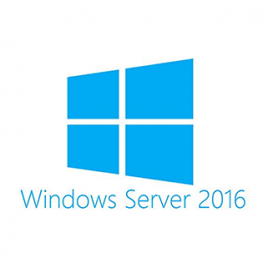Docente:
Da definire
Consulenti ed esperti del settoreIndirizzo
Torino - Corso Unione Sovietica 612 15/C Vedi mappaCategories
Corsi Aziendali e su Misura , Diurna , Elea Informatica , In Aula , Sicurezza informatica , Torino - Corso TrapaniOBIETTIVI:
Questo corso è pensato per gli IT professionals che hanno già qualche tipo di esperienza con Windows Server e che, in particolare, sono (o saranno) responsabili per la gestione dello storage e della capacità elaborativa dell’organizzazione. Il corso intende aiutare a comprendere gli scenari, i requisiti,e le funzioni e caratteristiche a disposizione e applicabili con Windows Server 2016.
Al termine del corso gli allievi saranno in grado di:
- Prepare and install Nano Server, a Server Core installation, and plan a server upgrade and migration strategy.
- Describe the various storage options, including partition table formats, basic and dynamic disks, file systems, virtual hard disks, and drive hardware, and explain how to manage disks and volumes.
- Describe enterprise storage solutions, and select the appropriate solution for a given situation.
- Implement and manage Storage Spaces and Data Deduplication.
- Install and configure Microsoft Hyper-V.
- Deploy, configure, and manage Windows and Hyper-V containers.
- Describe the high availability and disaster recovery technologies in Windows Server 2016.
- Plan, create, and manage a failover cluster.
- Implement failover clustering for Hyper-V virtual machines.
- Configure a Network Load Balancing (NLB) cluster, and plan for an NLB implementation.
- Create and manage deployment images.
- Manage, monitor, and maintain virtual machine installations.
PROGRAMMA:
Installing, upgrading, and migrating servers and workloads
- Introducing Windows Server 2016
- Preparing and installing Nano Server and Server Core
- Preparing for upgrades and migrations
- Migrating server roles and workloads
- Windows Server activation models
Configuring local storage
- Managing disks in Windows Server 2016
- Managing volumes in Windows Server 2016
Implementing enterprise storage solutions
- Overview of direct-attached storage, network-attached storage, and storage area networks
- Comparing Fibre Channel, iSCSI, and FCoE
- Understanding iSNS, data centre bridging, and MPIO
- Configuring sharing in Windows Server 2016
Implementing Storage Spaces and Data Deduplication
- Implementing Storage Spaces
- Managing Storage Spaces
- Implementing Data Deduplication
Installing and configuring Hyper-V and virtual machines
- Overview of Hyper-V
- Installing Hyper-V
- Configuring storage on Hyper-V host servers
- Configuring networking on Hyper-V host servers
- Configuring Hyper-V virtual machines
- Managing Hyper-V virtual machines
Deploying and managing Windows Server and Hyper-V containers
- Overview of containers in Windows Server 2016
- Deploying Windows Server and Hyper-V containers
- Installing, configuring, and managing containers
Overview of high availability and disaster recovery
- Defining levels of availability
- Planning high availability and disaster recovery solutions with Hyper-V virtual machines
- Backing up and restoring the Windows Server 2016 operating system and data by using Windows Server B
- High availability with failover clustering in Windows Server 2016
Implementing and managing failover clustering
- Planning a failover cluster
- Creating and configuring a new failover cluster
- Maintaining a failover cluster
- Troubleshooting a failover cluster
- Implementing site high availability with stretch clustering
Implementing failover clustering for Hyper-V virtual machines
- Overview of integrating Hyper-V in Windows Server 2016 with failover clustering
- Implementing and maintaining Hyper-V virtual machines on failover clusters
- Key features for virtual machines in a clustered environment
Implementing Network Load Balancing
- Overview of NLB clusters
- Configuring an NLB cluster
- Planning an NLB implementation
Creating and managing deployment images
- Introduction to deployment images
- Creating and managing deployment images by using MDT
- Virtual machine environments for different workloads
Managing, monitoring, and maintaining virtual machine installations
- WSUS overview and deployment options
- Update management process with WSUS
- Overview of PowerShell DSC
- Overview of Windows Server 2016 monitoring tools
- Using Performance Monitor
- Monitoring Event Logs
ESERCITAZIONI E SUPERAMENTO:
All’interno di ogni modulo vi sono dei momenti di autovalutazione non vincolati che consentono all’utente di interagire con l’animazione verificando l’apprendimento dei concetti presentati. Il corso viene considerato concluso una volta fruiti tutti i contenuti.
DESTINATARI:
IT Professional.
PREREQUISITI:
Per partecipare con profitto a questo corso è necessario che gli allievi:
- abbiano comprensione dei concetti fondamentali di networking;
- abbiano comprensione delle best practices relative alla sicurezza;
- abbiano una comprensione di base dei servizi AD DS;
- abbiano una conoscenza di base dell’hardware di un server;
- abbiano esperienza lavorativa con sistemi client Windows quali Windows 8.1 e Windows 10.
ATTESTATO:
Attestato di frequenza
Per le edizioni schedulate nei mesi successivi contattare la sede di competenza>
Il corso può essere erogato anche in modalità “ONE to ONE”.
Il corso è erogabile su altre sedi su richiesta.
Il costo del corso è finanziabile con i Fondi Interprofessionali.


